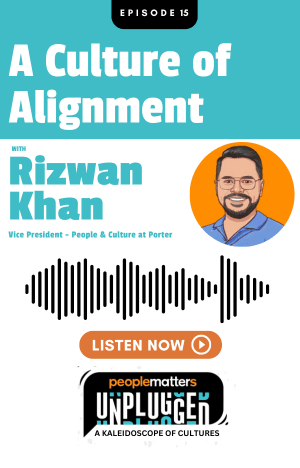Humanizing work for the post-pandemic world

The workforce today is different from the workforce before the pandemic. People used the time to reassess the where, how and why of work and life to be able to blend both personal and professional responsibilities in more manageable ways. For organisations and leaders, this is also a unique opportunity to rethink their leadership style and reset business strategy in the light of the emerging new normal and the uncertainty.
In fact, forward-thinking organisations have recalibrated their work and people management strategies in sync with the evolving needs of the new workforce. They realised that having workplaces that are made for people and having resilient businesses will enable them to grow, develop, and stay competitive.
So, what are the new elements of the workplace in the hybrid era that leaders should focus on as they rethink and create the post-pandemic workplace that help employees give their best, feel a sense of belonging and contribute to the business success? A panel of experts comprising Amanpreet Singh Bajaj, General Manager - India, Southeast Asia, Hong Kong and Taiwan, Airbnb, Rajkamal Vempati, Head Human Resources at Axis Bank and Dr Noel Coutinho, Co-Founder, ekincare discussed the priority areas for leaders and organisations as they rethink work, workforce and the workplace of the future, at People Matters TechHR India.
Flexibility - the keyword for post-pandemic workforce
One of the key elements that the new way of working factors in is "flexibility" which workers today value most in considering job offers or staying in their current jobs. After all, if flexibility that the hybrid mode of work provides makes employees happier, more committed to their employer, and perform better, it certainly should be of paramount importance to corporations. Several studies have shown that employees who have the flexibility to work both at work and from home are more productive and engaged than those who work entirely from the office or fully remotely.
It is important that companies consider how to provide employees with the freedom and feedback to perform their best work. This entails fostering better balance. In order to promote this way of thinking, employers and leaders must give their employees a choice about how they work. This includes allowing them to choose their own schedules and work locations, things that can be supported by flexible office settings. The online marketplace company which recently announced its plan to allow its employees to live and work from almost anywhere around the world is embracing a work paradigm which is designed to attract staff and ensure flexibility, according to Amanpreet.
Architecting the future of work around “individual”
You can’t provide flexibility in isolation but rather based on a set of metrics – much of it has been brought to the fore by two years of disruption, including diversity, equity, well-being, and a sense of purpose. In order for employees to feel a sense of belonging, you must create an environment where they can express their true selves. In addition to increasing employee motivation, wellness, and job happiness, authentic self-expression is vital for both employees and their employers, says Rajkamal.
Leaders need to define the new table stakes of people management as people look for more from their employers than just compensation. This goes well beyond compensation and includes priorities like resource accessibility, inspiring leaders, and career development opportunities.
How do you do this? Dr Noel contends that the future of work is going to revolve around “employees” and the first and foremost priority for a leader should be to restructure the goals and objectives and the way we define the mission statement of the company.
Leveraging tech to boost employee well-being, experience
The pandemic has clearly accelerated development in automation, robotics, and artificial intelligence, which are now being exploited by companies to keep employees connected, safe, and productive. Post-pandemic, companies are looking to technology to move to the next level, not just to add to the technology stack, as they prepare for a hybrid work environment. Employers and employees alike are looking to emerging technology to transform and optimize the work experience. Nevertheless, studies show that employees are putting in more time at work using multiple tech touchpoints, which is adding to the burnout crisis.
The continued acceleration of digital adoption -- the need to scale and digitize functions like communication, HR processes, and IT systems to ensure business continuity -- has caused employees to constantly switch to "new and improved" versions of applications and digital tools, adding to their woes. So, do you balance this?
"As a tech company, we use multiple tools, but we make sure we define the outcomes before we deploy them." We put the right measurables so we can track progress. We align our technology deployments with the pillars of employee wellness -physical, mental, social, and financial- which we define at the top-down level," says Dr Noel. A strategy that considers your people rather than your tech stack can make all your investment in work tech seem moot. The ultimate goal is to enable employees to deliver their best at work.













